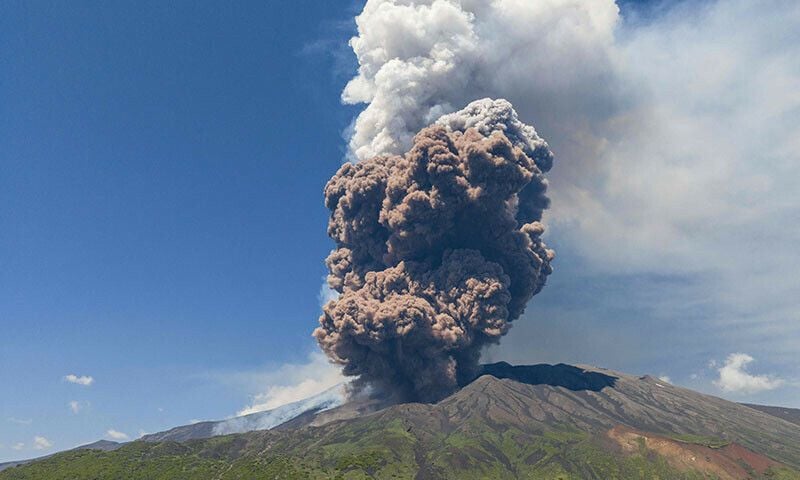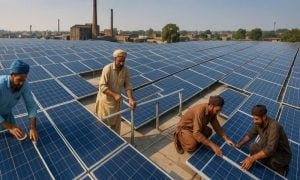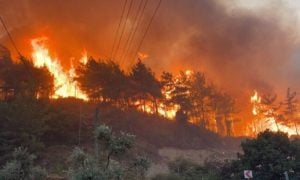Key points
- Over 80 per cent of Earth’s surface is of volcanic origin
- There are about 1,350 potentially active volcanoes on Earth
- “Ring of Fire” is the most seismically and volcanically active area on Earth
- 1815 eruption of Tambora in Indonesia lead to “the year without a summer”
ISLAMABAD: There are about 1,350 potentially active volcanoes on Earth, not including the continuous belts of volcanoes found on the ocean floor at spreading centers like the Mid-Atlantic Ridge, according to US Geological Survey (USGS).
Of these, around 500 have erupted in historical time.
“Ring of fire”
Many of the Earth’s active volcanoes are located along the Pacific Rim, an area known as the “Ring of Fire.” This zone is the most seismically and volcanically active area on Earth. In the United States, volcanoes in the Cascade Range and Alaska’s Aleutian volcanic chain are part of the Ring of Fire, while Hawaiian volcanoes form over a hot spot.
Within the United States and its territories, there are about 170 potentially active volcanoes. The USGS monitors and assesses hazards from these volcanoes.
Since the founding of the United States, several volcanoes in the contiguous US have erupted. Mount St Helens in Washington erupted multiple times between the late 1700s and 2008. Lassen Peak in California erupted in 1915 after a series of steam blasts began in 1914. Mount Hood in Oregon had an eruptive period beginning in 1781 and minor activity in the mid-1800s.
There is no definitive evidence that an eruption at one volcano can trigger an eruption at another volcano far away. However, volcanoes located within 10 kilometres of each other or that share a common magma source can experience linked activity. For example, the 1912 eruption of Novarupta in Alaska was fueled by magma beneath Mount Katmai, which subsequently collapsed into the emptied chamber.
Impact on global weather
Volcanoes can affect global weather. The 1991 eruption of Mount Pinatubo in the Philippines led to worldwide cooling and vivid sunsets. Similarly, the 1815 eruption of Tambora in Indonesia caused global temperatures to drop, leading to “the year without a summer.”
Over 80 per cent of Earth’s surface is of volcanic origin. Volcanic activity has formed landscapes, created fertile soils, and even contributed to Earth’s atmosphere. Eruptions have long-term benefits, including geothermal energy, rich soils, and valuable mineral deposits such as copper and gold.
























